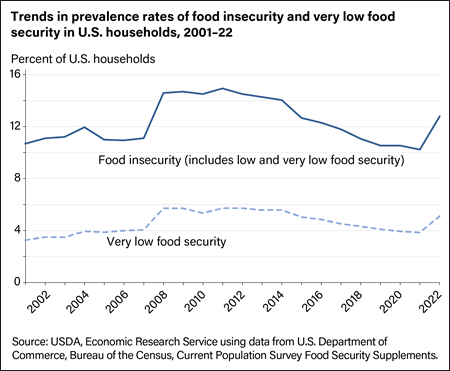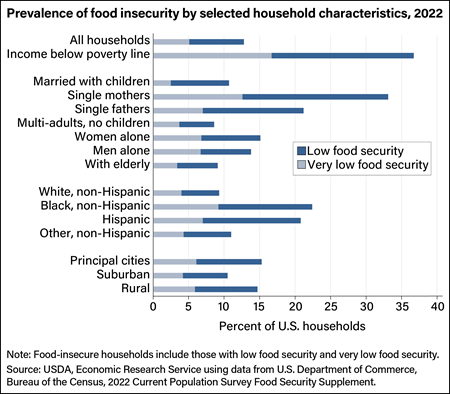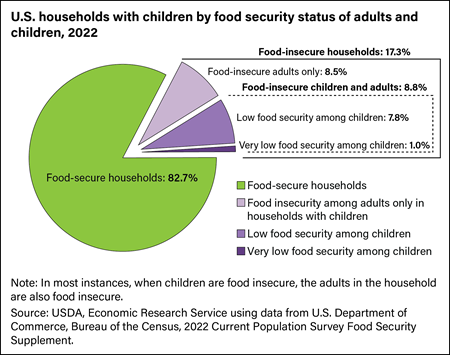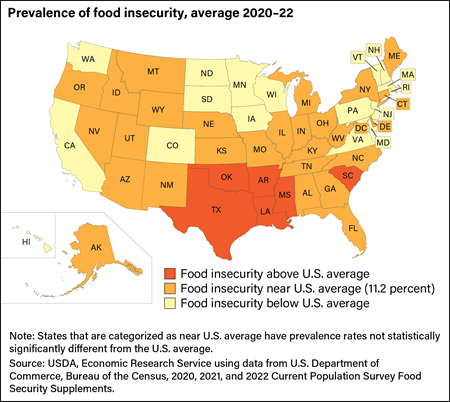Food Security and Nutrition Assistance
ERS monitors the food security of U.S. households through an annual, nationally representative survey. While most U.S. households are food secure, a minority of U.S. households experience food insecurity at times during the year, meaning that their access to adequate food for active, healthy living is limited by lack of money and other resources. Some experience very low food security, a more severe range of food insecurity where food intake of one or more members is reduced and normal eating patterns are disrupted. Reliable monitoring of food security contributes to the effective operation of USDA’s food and nutrition assistance programs aimed at reducing food insecurity.

In 2022, 12.8 percent of U.S. households were food insecure at least some time during the year, meaning they had difficulty providing enough food for all their members because of a lack of resources. The 12.8 percent of food-insecure households (17.0 million households) includes 5.1 percent (6.8 million) that experienced very low food security, a more severe form of food insecurity in which the food intake of some household members was reduced, and normal eating patterns were disrupted. The 2022 prevalence rates for both food insecurity and very low food security were statistically significantly higher than the rates recorded in 2021 (10.2 percent and 3.8 percent).

In 2022, 36.7 percent of households with incomes below the Federal poverty line were food insecure. Food-insecure households include those with low food security and very low food security. Rates of food insecurity were also substantially higher than the national average for single-parent households, and for Black and Hispanic households. Food insecurity was more common in both large cities and rural areas than in suburban areas.

Parents often shield children from experiencing food insecurity, particularly very low food security, even when the parents themselves are food insecure. In 2022, 17.3 percent of households with children were food insecure. In about half of those food-insecure households with children, only the adults experienced food insecurity. But in 8.8 percent of households with children, both children and adults were food insecure sometime during the year. In 1.0 percent of U.S. households with children (381,000 households), both children and adults experienced instances of very low food security.

Food insecurity rates differ across States due to both the characteristics of their populations and to State-level policies and economic conditions. The estimated prevalence of food insecurity during 2020–22 ranged from 6.2 percent of households in New Hampshire to 16.6 percent in Arkansas (data for 2020–22 were combined to provide more reliable statistics at the State level).

